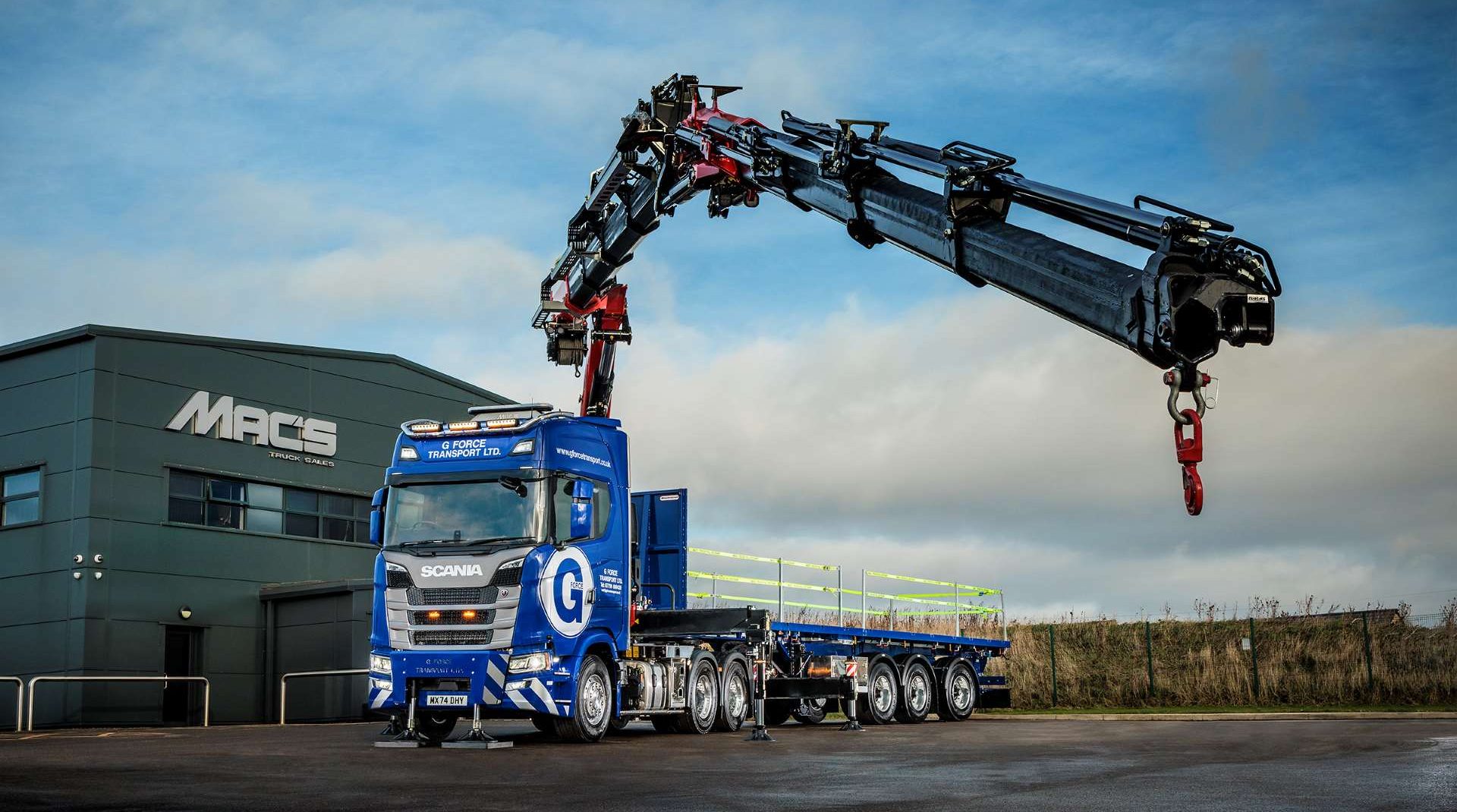Staying compliant with trailer length and crane regulations is essential for fleet operators, transport managers, and drivers. Recent cases have shown an increased amount of enforcement action against vehicles exceeding the legal limits, often due to simple misunderstandings about Special Type General Order (STGO) and Construction & Use (C&U) regulations. To help you stay informed and compliant, we’ve broken down the key information you need to know.
Maximum Permissible Length for Articulated Vehicles
The maximum length for an articulated unit is 16.5 metres, whether it has a crane or not. The size of the crane does not impact this measurement, and exceeding this length without the correct authorisations can lead to enforcement action.
Operators must comply with STGO regulations and submit movement orders to local authorities to run OVER these lengths. Understanding the rules is crucial to avoiding penalties and ensuring safe transportation of loads.
Load Overhang Allowances
While the trailer length must remain within 16.5m, operators are permitted overhang of the load under specific conditions:
- Up to 1m overhang – No additional requirements.
- Between 1m and 2m – The load must be clearly visible and comply with C&U regulations.
- Between 2m and 3m – The vehicle must display marker boards and comply with C&U regulations.
- Over 3m – A movement order is required, and the vehicle must be accompanied by an attendant.
For example, a 40ft container can legally overhang the trailer as long as the total truck an trailer length does not exceed 16.5m.
Regulatory Issues with Large Loader Cranes
The DVSA has raised some concerns about heavy goods vehicles that are fitted with large loader cranes (80 tonnes lifting capacity or more). These modifications can significantly increase the weight of the vehicle, often bringing it close to or exceeding the maximum permissible weight.
This has led to compliance issues, particularly when towing a standard semi-trailer. Operators must ensure they understand whether their vehicles fall under STGO regulations or must comply with C&U requirements.
Recent Enforcement Cases
Several recent cases have highlighted the importance of compliance:
- A vehicle was found to be 1,200kg overweight and measured 17.8m in length instead of the permitted 16.5m. This resulted in legal action and penalties.
- Another vehicle, transporting pontoon sections under incorrect STGO classification, was measured at 18m (exceeding the 16.5m limit) and overloaded at 29,460kg instead of the permitted 26,000kg. The operator was forced to replace the tractor unit to continue operations legally.
How to Ensure Your Fleet Stays Compliant
To avoid fines, operational delays, and legal issues, fleet operators should:
- Measure vehicle lengths correctly – Ensure all parts of the vehicle, including any mounted crane, are included.
- Use a shorter trailer from Mac’s – Reducing the trailer length can help keep total vehicle length within legal limits.
- Check total weight – The crane’s weight impacts the vehicle’s payload, so confirm compliance with the maximum allowable weight.
- Understand overhang rules – Follow C&U regulations to avoid unnecessary penalties.
Urban Trailers from Macs Truck Sales
At Mac’s, we stock urban artic trailers designed to work seamlessly with articulated crane vehicles. These trailers are shorter than a standard arctic, and come equipped with rear steering axles for improved manoeuvrability and are available in a range of colours, ready to go now.
For expert advice on selecting the right trailer for your needs and ensuring compliance with the latest regulations, get in touch with us today!













